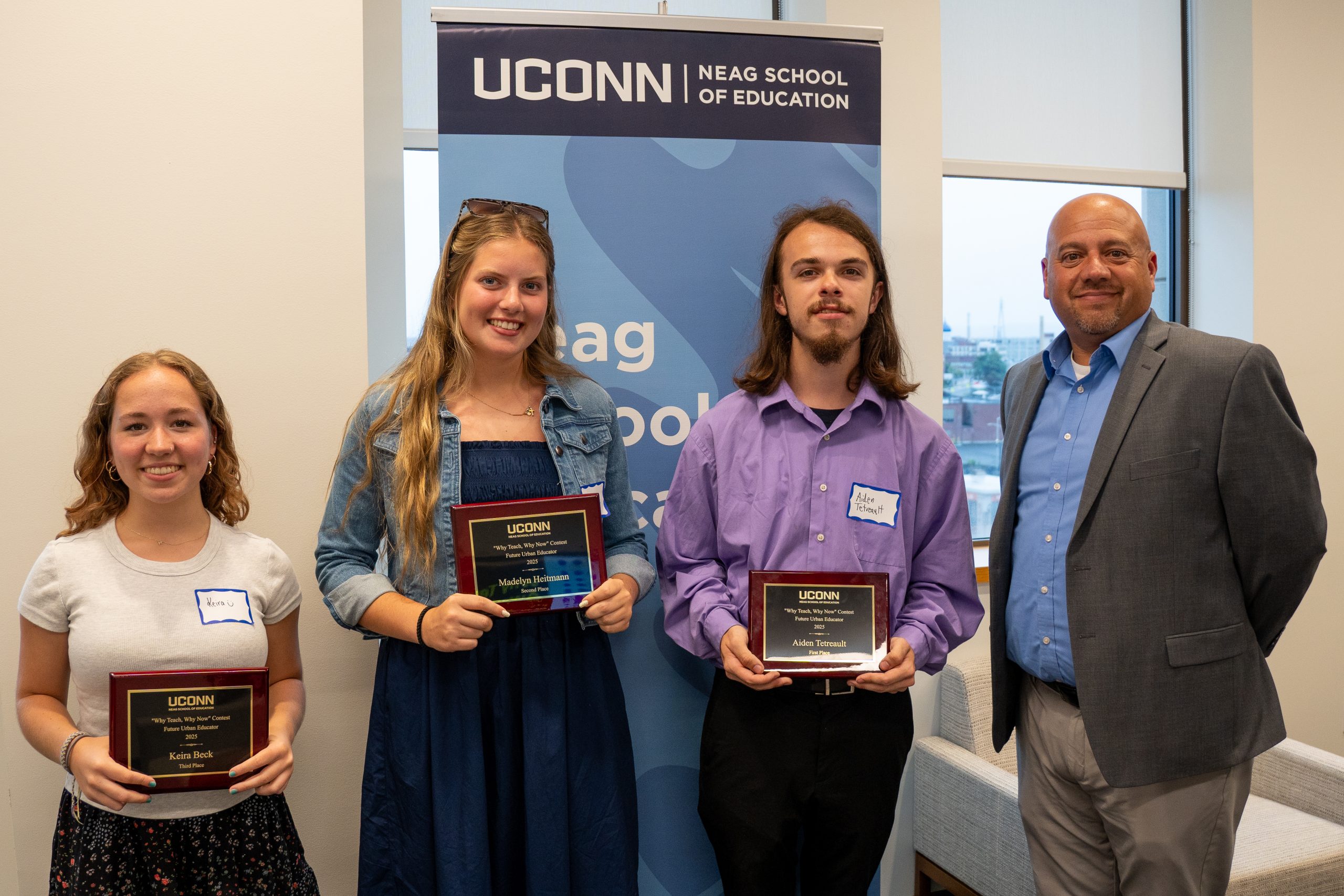
Like many little boys, Andrew Bush spent much of his childhood fascinated by dinosaurs.
He learned everything he could about them, poring over dinosaur books and dragging his parents to natural history museums to learn more about his favorite dinosaur, the diplodocus. As he learned, his prehistoric interests widened, and he began amassing a fossil collection, including fossilized sharks’ teeth gathered from the beaches in Maryland where he grew up.
But if you ask him, he might tell you that he never really did grow up.
An assistant professor of ecology and evolutionary biology in the College of Liberal Arts and Sciences, Bush has devoted his life to the study of fossils. His research focuses not on dinosaurs, but on a much earlier time in Earth’s history that has one thing in common with the prehistoric reptiles: extinction.
“A big part of what I do is to break rocks open that date from before and after a mass extinction,” he says. “Rocks give us a record of what the environment was like at that time.”
In his research, Bush is trying to determine what happened to set off the Devonian extinction, which occurred about 375 million years ago and primarily affected the Earth’s oceans. During this period, a great diversity of fish and invertebrates inhabited the sea, and massive coral reefs dotted the ocean floor. On land, only plants, some insects, and the first primitive tetrapods existed. Paleontologists estimate that near the end of the period, between 70 and 80 percent of these species died off.
Unlike the better known Cretaceous extinction, in which an asteroid impact 65 million years ago wiped out the dinosaurs, the causes and timing of the Devonian extinction remain a mystery.
“This extinction is interesting because it seems different than the others,” says Bush. “You can explain many of the others with one big perturbation of the Earth. In this case, many different perturbations probably led to multiple extinction events.”
Bush and his colleagues in the Center for Integrative Geosciences and the departments of Anthropology and Ecology and Evolutionary Biology recently received an Intermediate Research Equipment Grant from the Office of the Vice President for Research at UConn to purchase equipment for a thin section laboratory. This suite of machines will create thin sections of rock – thin enough to be mounted and viewed on microscope slides – by slicing, grinding, and polishing the bits of the stone that Bush and others bring back to Storrs from the field. The machine, says Bush, will accomplish in minutes what it might take a person several hours to produce. Although the lab will be primarily used by the grant recipients, Bush says that it could have other applications, in areas such as materials science, soil science, and engineering.
Using these delicate rock slices, Bush investigates the microscopic structure of the remains of shelled invertebrates from the Devonian Period. He collects rock samples from southwestern New York and northwestern Pennsylvania, an area rich in Devonian Period geology. By identifying the diversity of species before and after the extinction, he says, he can get a sense of how the environment changed.
For example, one leading hypothesis for the die-off is that the ocean’s waters became anoxic, or oxygen-deficient. Some fossil evidence suggests that during this extinction, animal diversity declined more in deep waters than in shallow waters, a finding that Bush says supports the hypothesis.
“In shallow water it’s difficult to use all the oxygen, since the surface picks up oxygen from the air,” he says. “So the shallow animals could have survived better. If anoxia is the answer, you would expect the extinction to be depth-selective.”
Other hypotheses include a pulse of global cooling and a change in the ocean’s carbon cycle that made it difficult for organisms to secrete shells, both of which probably played some part in the extinction. The studies are relevant to today, says Bush, because modern Earth faces many similar issues.
“Climate change and ocean acidification are big problems, and mass extinctions show us that it is possible to disturb the Earth so badly that many organisms die off,” he says. “A sure way to do that is to change the atmosphere and oceans.”
Bush is currently using a statistical method that will help account for time gaps among fossil representations of prehistoric animals. Because paleontologists rely on fossil evidence, time estimates of major events, such as extinctions, are often only as robust as the oldest or youngest fossil found. Using observed fossil occurrences for each species, the test helps to determine whether the species are likely to have gone extinct around the same time. Bush hopes this method will help to pin down the timing of the Devonian extinction with more accuracy.
Bush still manages to dabble a little in dinosaur studies. His graduate student, Patrick Getty, analyzes the impressions that dissolved dinosaur bones leave behind in rock. And every other spring Bush, co-teaches a course with Christophe Dupraz of the Department of Marine Sciences called Earth History and Global Change, in which he takes undergraduates on a “fossil tour” of the Storrs campus. The students look for fossils and other interesting rocks built into the sides of buildings. They identify burrows, clams, snails, a host of other marine invertebrates and, not least of all, dinosaur tracks.
“I never get tired of learning what life and the Earth were like during ancient times,” Bush says. “Sometimes they seem completely alien, and sometimes they seem familiar. But it is always exciting to discover new things.”


